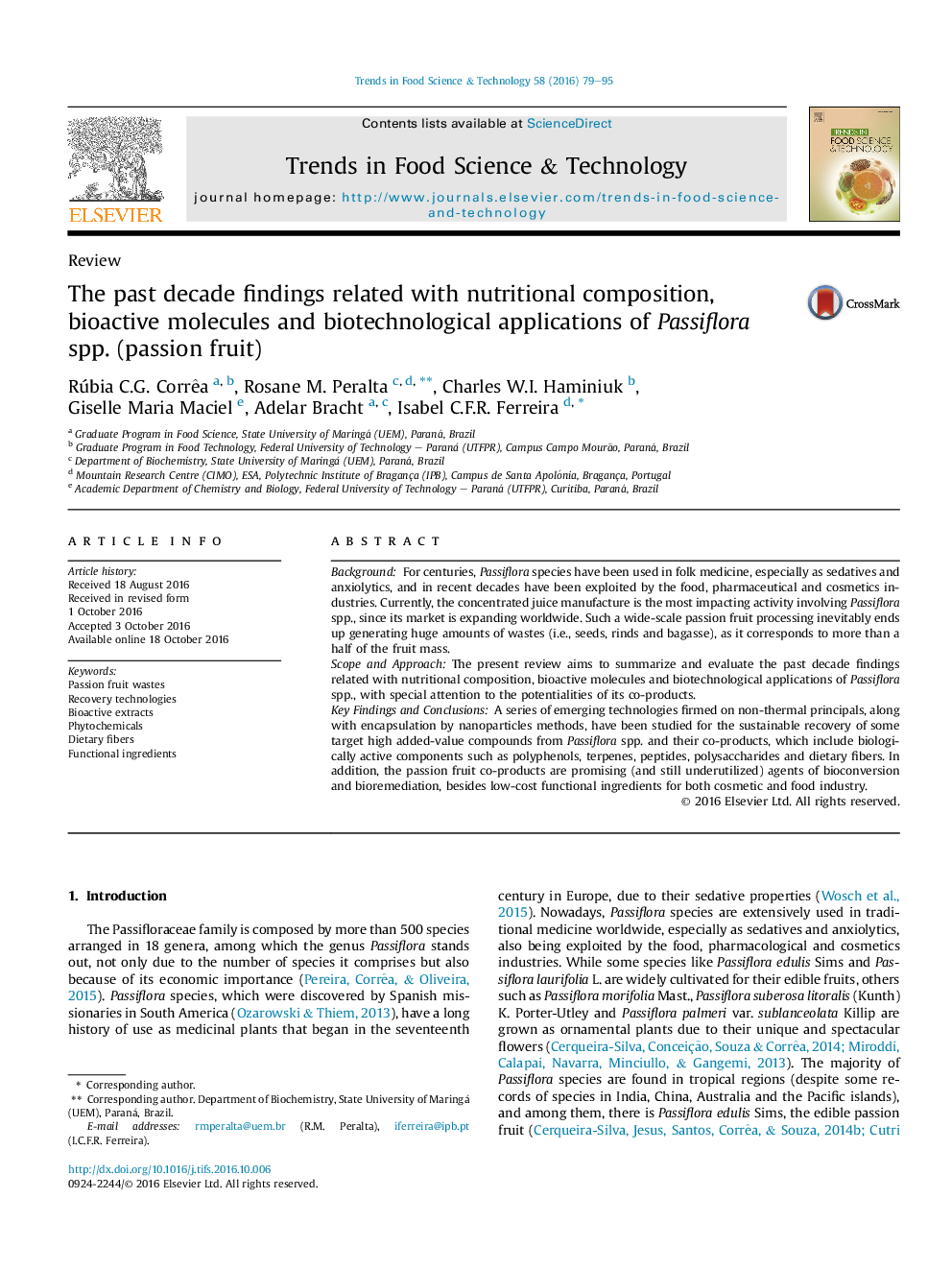| Article ID | Journal | Published Year | Pages | File Type |
|---|---|---|---|---|
| 5523810 | Trends in Food Science & Technology | 2016 | 17 Pages |
â¢Passiflora spp. and their co-products include several biologically active components.â¢Polyphenols, terpenes, peptides, polysaccharides and dietary fibers are examples.â¢Emerging technologies have been studied for the sustainable recovery of these compounds.â¢The passion fruit co-products are promising agents of bioconversion and bioremediation.â¢They represent low-cost functional ingredients for both cosmetic and food industry.
BackgroundFor centuries, Passiflora species have been used in folk medicine, especially as sedatives and anxiolytics, and in recent decades have been exploited by the food, pharmaceutical and cosmetics industries. Currently, the concentrated juice manufacture is the most impacting activity involving Passiflora spp., since its market is expanding worldwide. Such a wide-scale passion fruit processing inevitably ends up generating huge amounts of wastes (i.e., seeds, rinds and bagasse), as it corresponds to more than a half of the fruit mass.Scope and ApproachThe present review aims to summarize and evaluate the past decade findings related with nutritional composition, bioactive molecules and biotechnological applications of Passiflora spp., with special attention to the potentialities of its co-products.Key Findings and ConclusionsA series of emerging technologies firmed on non-thermal principals, along with encapsulation by nanoparticles methods, have been studied for the sustainable recovery of some target high added-value compounds from Passiflora spp. and their co-products, which include biologically active components such as polyphenols, terpenes, peptides, polysaccharides and dietary fibers. In addition, the passion fruit co-products are promising (and still underutilized) agents of bioconversion and bioremediation, besides low-cost functional ingredients for both cosmetic and food industry.
